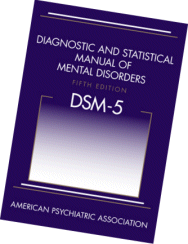This post is part of a series of guest posts on GPS by the graduate students in my Psychopathology course. As part of their work for the course, each student had to demonstrate mastery of the skill of “Educating the Public about Mental Health.” To that end, each student has to prepare two 1,000ish word posts on a particular class of mental disorders.
______________________________________________
Learning to Change and a Change to Learning (Disorders) by Adam Braly
Skills such as reading, writing, adding and subtracting might seem effortless for many, but for others, these academic skills require considerable effort and attention to sustain. Individuals that are performing substantially below expectations are considered to have some form of learning disorder (LD), but communicating this notion is increasingly difficult as various sectors identify and label LD differently. The DSM-IV uses the term learning disorders to refer to a group of four disorders: reading disorder, mathematics disorder, written expression disorder, and learning disorder not otherwise specified, with the latter encompassing individuals who meet the diagnostic criteria for more than one type. Conversely, the ICD-10 uses the term specific developmental disorder of scholastic skills to refer to six subtypes (specific reading disorder, specific spelling disorder, specific disorder of arithmetic skills, mixed disorder of scholastic skills, other developmental disorders of scholastic skills, and developmental disorder of scholastic skills, unspecified). The use of “specific” implies that difficulties in learning are restricted to that domain. For instance, specific arithmetic disorder does not include difficulties that are related to reading or spelling. Across the world, advocacy groups refer to specific terms (i.e., dyslexia, dysgraphia, and dyscalculia) for difficulties in reading, writing and arithmetic, respectively. In educational and legal sectors, (specific) learning disabilities are often used to refer to various difficulties in learning. In the United States, both the Individuals with Disabilities Education Improvement Act (IDEIA) and the Americans with Disabilities Act (ADA) were enacted to ensure services to individuals throughout the nation.
Though these conceptualizations certainly overlap, their differing uses often muddle lay impressions of LD and the categories there within. Clearly, varying terminologies are resultant from separate entities attempting to construct their own take on LD, but more importantly the purpose of identifying LD in a setting will inherently constrain its definition. In the traditional patient-clinician setting, classifying and identifying LD is central to increasing the effectiveness of future diagnoses and interventions. Additionally, the promotion of future scientific research is pivotal in understanding the core psychopathology. Advocacy groups strive to classify individuals in terms of current legislation to protect the rights of said individuals to the accessibility of services. On the other hand, the purpose in education and legal contexts is to identify individuals that have educational needs and to determine whether they are eligible for special services. It is worth mentioning that in the U.S., the criteria and procedures for identifying LD in young children are specified by governmental law, rather than clinical diagnosis (see, IDEIA). Low achievement or failure to meet statewide grade standards in oral and written expression, listening comprehension, reading comprehension, and mathematics (calculation and problem-solving) are the primary criterion for identification. Additionally, IDEIA regulations maintain that identification criteria must not require the use of an IQ-achievement discrepancy (more on this shortly). Although this legal definition makes explicit references to dyslexia, it excludes related disorders like dysgraphia and dyscalculia and seemingly reduces LD to a language-based disorder.
In the DSM-IV, LD can be located under “Disorders First Diagnosed in Infancy, Childhood, or Adolescence” and the diagnostic criteria are provided for three specific subtypes with the customary not otherwise specified subtype: reading disorder, mathematics disorder, written expression disorder. Across the three subtypes, domain specific identification of LD is predicated on (1) low academic achievement, (2) impairment, and (3) comorbidity. In the first, academic achievement that is “substantially below that expected given the person’s chronological age, measured intelligence, and age-appropriate education” necessitates a colloquial IQ-achievement discrepancy. This discrepancy cut-score is specified at 2 standard deviations from the norm. For the second, impairment refers to difficulties in learning that interfere with academic or daily living activities requiring reading, mathematics, or written expression (academic skills). Lastly, an LD diagnosis can be made in the presence of hearing or vision deficits if learning difficulties exceed what would normally be associated with the sensory deficit.
 In the DSM-5, LD is instead clustered under “Neurodevelopmental disorders.” This new appointment reifies a long and widely held presumption that LD is a neurological disorder that originates in the central nervous system and affects academic-based performance. The LD category was revised into a single, overarching diagnosis – specific learning disorder (SLD). Previously, LD diagnoses were limited to three specific categories, but difficulties in reading, writing, and arithmetic are highly interrelated. Now, clinicians are able to diagnose overall academic shortcomings with detailed specifiers for each manifestation area. However, the notion that LD could be measured psychometrically via an aptitude-achievement discrepancy has been empirically discredited [(1), (2)]. Hence the most significant change to diagnostic criteria is the removal of the aptitude-achievement discrepancy. In its place, academic performance, relevant to reading, writing, and arithmetic, assessed by clinical judgment, becomes the determining criterion. These manifestation areas are fundamental to school, work, and every day literacy and achievement (referred to as “keystone academic skills”). Additionally, the removal of the “not otherwise specified” subtype reflects the notion that LD cannot be detected without assessment of skills in one of the three academic areas.
In the DSM-5, LD is instead clustered under “Neurodevelopmental disorders.” This new appointment reifies a long and widely held presumption that LD is a neurological disorder that originates in the central nervous system and affects academic-based performance. The LD category was revised into a single, overarching diagnosis – specific learning disorder (SLD). Previously, LD diagnoses were limited to three specific categories, but difficulties in reading, writing, and arithmetic are highly interrelated. Now, clinicians are able to diagnose overall academic shortcomings with detailed specifiers for each manifestation area. However, the notion that LD could be measured psychometrically via an aptitude-achievement discrepancy has been empirically discredited [(1), (2)]. Hence the most significant change to diagnostic criteria is the removal of the aptitude-achievement discrepancy. In its place, academic performance, relevant to reading, writing, and arithmetic, assessed by clinical judgment, becomes the determining criterion. These manifestation areas are fundamental to school, work, and every day literacy and achievement (referred to as “keystone academic skills”). Additionally, the removal of the “not otherwise specified” subtype reflects the notion that LD cannot be detected without assessment of skills in one of the three academic areas.
Overall, the changes to LD in the newest revision of the DSM have pragmatic implications for diagnosis and intervention, but an ongoing need for scientific research remains. The removal of the IQ-achievement discrepancy necessitates a reliance on practice-based data for future research, and may even alleviate biases that are inherent to intelligence testing. A theme of academic performance has become pervasive and denotes a reliance on practitioners and parents to play a pivotal role in identifying LD. Aside from this, one thing remains disheartening. Academic manifestation areas are not presumed to be the underlying cause of the disorder, because the CNS disorder remains at the core of the psychopathology. Given this, a complex cognitive disorder has been effectively reduced to a narrow set of literacy skill areas.

